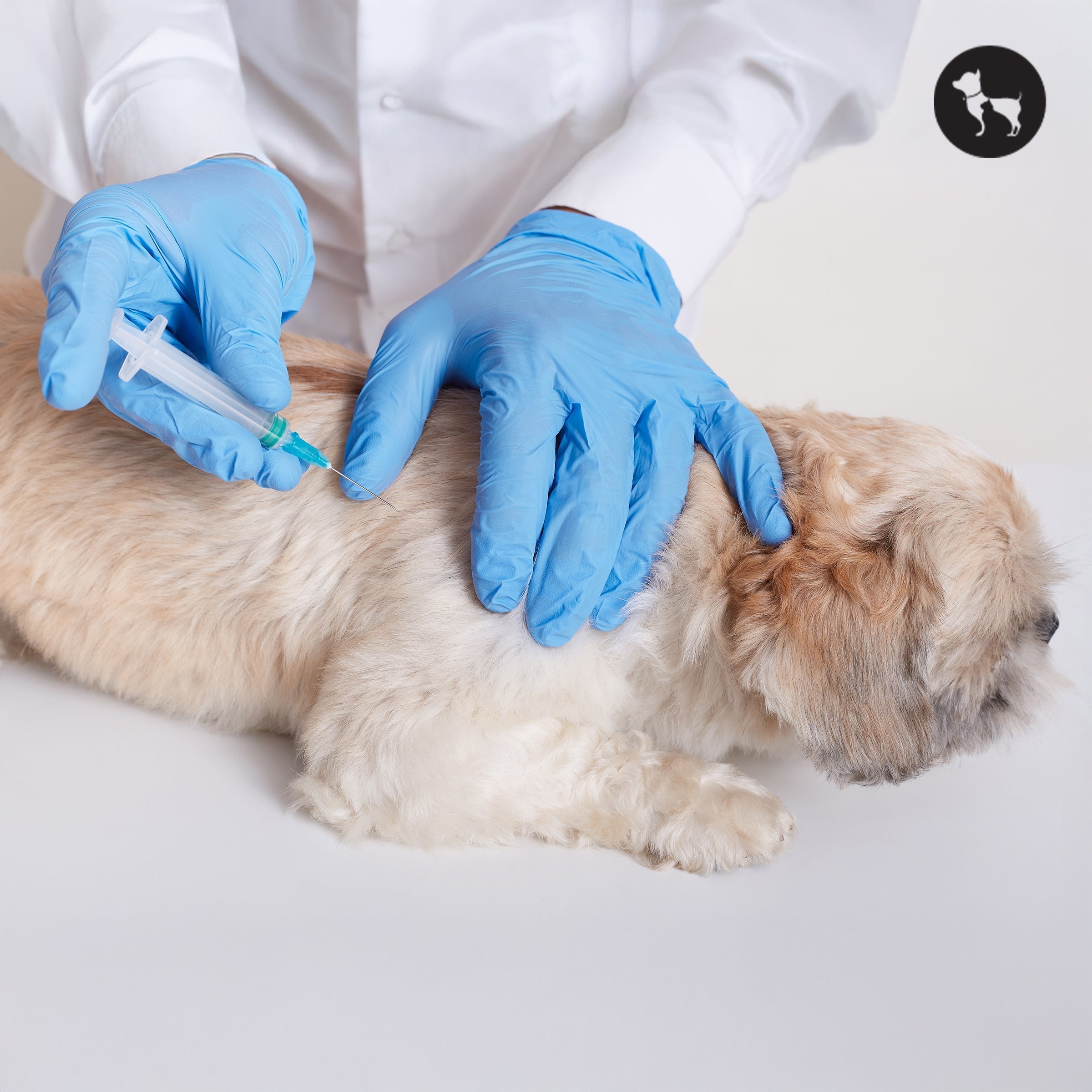
Tick fever is a sneaky and serious illness that dogs can catch from infected ticks. These tiny parasites don’t just cause irritation but also affect your dog’s blood, weaken their immune system, and put their overall health at risk.
The good news? If you spot the signs early and act quickly, tick fever can be treated effectively. Let’s dive into what to watch for, why it happens, and how you can help your furry friend stay safe.

Tick fever refers to a group of diseases caused by tick-borne pathogens, primarily:
Babesia Species: It causes Canine Babesiosis. These protozoan parasites invade red blood cells, leading to anaemia.
Ehrlichia Species: It causes Canine Ehrlichiosis. These bacteria infect white blood cells and platelets, leading to immune system dysfunction.
Anaplasma species: It causes Canine Anaplasmosis, affecting platelets and sometimes red blood cells.
Ticks act as vectors, transferring these pathogens from one host to another. In India and other tropical regions, Rhipicephalus sanguineus (brown dog tick) is a common carrier. Puppies, elderly dogs, and immunocompromised dogs are more vulnerable to severe infections.
Dogs contract tick fever when an infected tick bites and feeds on their blood. The transmission usually requires the tick to be attached for 24-48 hours, which is why daily tick checks are essential. Dogs that roam outdoors, live in grassy areas, or interact with other animals are at higher risk.

Symptoms vary depending on the pathogen, but common signs include:
Fever and lethargy
Loss of appetite
Pale or yellow gums
Dark or reddish urine
Enlarged lymph nodes and spleen
Vomiting or diarrhoea
Bleeding tendencies
Weight loss
A veterinarian will perform multiple tests to confirm tick fever:
Blood Smear Test: Identifies Babesia parasites inside red blood cells.
Complete Blood Count (CBC): Detects anaemia, low platelets, or white blood cell abnormalities.
PCR Test: Confirms the exact pathogen for precise treatment.
Serology: Detects antibodies against Ehrlichia or Anaplasma.

Treating tick fever in dogs quickly is crucial to prevent complications and help your furry friend recover safely. The right treatment depends on the severity of the infection and your dog’s overall health.
Tick fever is caused by parasites that invade your dog’s blood, so your vet will usually prescribe antibiotics or antiparasitic medications to target the infection directly. In some cases, additional medications may be needed to manage symptoms like fever, lethargy, or anaemia. It’s essential to complete the full course as prescribed, even if your dog seems to improve quickly.
Alongside medication, supportive care helps your dog recover faster. Ensure your dog gets plenty of rest, stays well-hydrated, and eats nutritious meals to strengthen their immune system. Monitoring your dog for changes in behaviour or worsening symptoms is also critical, so you can alert your vet if needed.
Preventing tick bites is key to avoiding a repeat infection. Use vet-recommended tick preventives, regularly check your dog for ticks, and keep your living spaces and outdoor areas clean and tick-free. Early detection of ticks can save your dog from a lot of discomfort and health risks.
Prevention is always better than a cure, especially since tick fever can be life-threatening if left untreated. Here are some effective strategies to keep your dog safe:
Use tick control products recommended by your vet, such as topical spot-ons, tick collars, or oral medications.
Check your dog daily for ticks, paying close attention to warm, hidden areas like the ears, underarms, and groin.
Keep your dog’s environment clean by maintaining a tidy yard and washing bedding regularly to reduce tick exposure.
Consider vaccination for Babesia if available, as advised by your vet.
Limit outdoor exposure in tick-prone areas, avoiding tall grass or regions known to have high tick activity.
Immediate veterinary attention is necessary if you notice:
High fever or lethargy
Pale or yellow gums
Dark red or brown urine
Unexplained bleeding or bruising
Loss of appetite or vomiting
Tick fever is a serious condition, but with early detection, proper treatment, and preventive care, your dog can stay healthy and happy. Regular tick checks, a clean living environment, and timely use of preventive measures are key to keeping your furry friend safe.
For added protection, products from Heads Up For Tails - including tick sprays, powders, and shampoos can help prevent tick infestations effectively. Combining regular vet visits with trusted HUFT tick-control solutions ensures your dog is not only protected but also enjoys a comfortable, worry-free life.
Symptoms can appear within 1–3 weeks after an infected tick bite. However, some dogs may remain asymptomatic carriers for months, so regular tick checks and preventive care are essential.
While indoor dogs are at lower risk, they can still contract tick fever if ticks hitch on clothing, shoes, or other pets. Daily checks and preventive measures are still recommended.
While medication is essential, nutritious meals and hydration support recovery. Some vets may recommend supplements like vitamin B or immune boosters to aid healing.
Yes, puppies are more vulnerable because their immune systems are still developing. Extra caution with tick prevention, hygiene, and outdoor supervision is necessary for young dogs.